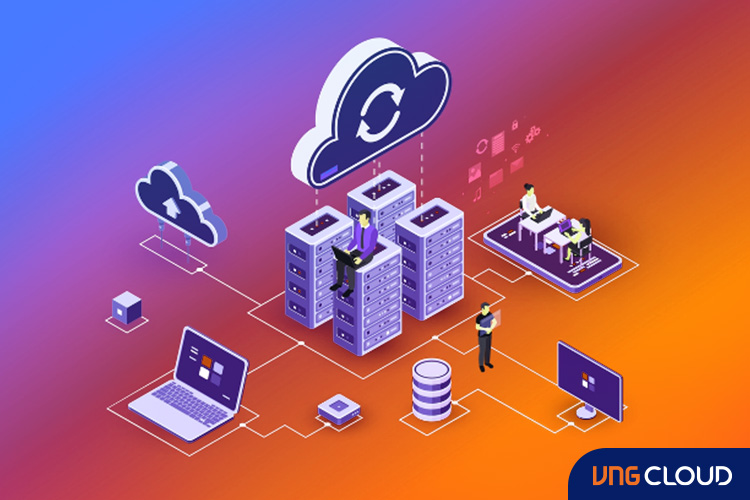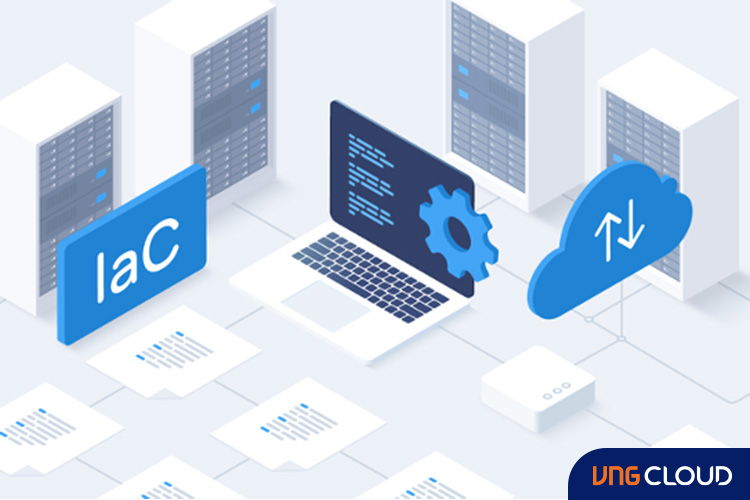The management of information technology (IT) infrastructure across multiple clouds, servers, and environments can quickly become complex and difficult to handle. However, there is a solution that enables enterprises to efficiently operate and expand their infrastructure at scale: Terraform, an Infrastructure-as-Code (IaC) tool.
In this article, we will explore Terraform in-depth, covering its fundamentals and comparing it to other IaC solutions. Additionally, we will provide insights into a Terraform's workflow, features, and the optimal approach for deploying it within your own IT infrastructure. By the end of this article, you will have a comprehensive understanding of how to orchestrate your entire IT ecosystem using Terraform and IaC.
What is Infrastructure as Code?

Infrastructure as Code (IaC) revolutionizes infrastructure management by enabling the use of code to define and control infrastructure, as opposed to relying on manual processes such as navigating through a user interface or using command line interfaces. This approach allows you to manage your infrastructure in a manner similar to how you handle application code, incorporating version control, automation, and collaborative workflows. Essentially, IaC transforms your infrastructure into a software-like entity, providing greater control and flexibility in its management.
Over time, IaC has undergone several evolutions, initially starting with configuration management tools like CFEngine, Chef, Puppet, Ansible, and Salt. More recently, newer tools such as CloudFormation and Terraform have emerged, adopting a declarative approach that emphasizes resource provisioning rather than the configuration of existing resources. In the latest generation of tools, the emphasis has shifted towards leveraging the capabilities of imperative programming languages. Terraform offers Cloud Development Kits (CDKs), while Pulumi has gained popularity as an option for provisioning infrastructure using traditional software tools.
What Is Terraform?
Terraform, developed by HashiCorp, is a popular Infrastructure as Code (IaC) tool widely utilized by DevOps teams for automating a range of infrastructure tasks. One of Terraform's key use cases is the provisioning of cloud resources. It is an open-source and cloud-agnostic provisioning tool written in the Go language.

With Terraform, you have the ability to define your entire infrastructure using code. Whether your servers are hosted on VNG Cloud or other providers, Terraform empowers you to create and manage these resources seamlessly across multiple platforms. Think of Terraform as the connective tissue and universal language that enables you to effectively manage your entire IT stack.
What are the purposes of Terraform?
Terraform excels at facilitating public cloud provisioning on leading providers, making it a primary focus of the tool. It offers robust Infrastructure as Code (IaC) capabilities for services. By utilizing providers, which are plugins that encapsulate existing APIs and languages, Terraform seamlessly integrates with these public clouds, allowing users to leverage familiar Terraform syntax to define and manage their infrastructure.
Another prominent use case for Terraform is enabling multi-cloud deployments. One of the key advantages of Terraform is its ability to orchestrate deployments across various cloud providers concurrently, distinguishing it from many other Infrastructure as Code (IaC) alternatives. This capability to deploy resources seamlessly across multiple cloud providers is invaluable, as it allows engineers to leverage a consistent syntax, eliminating the need to learn and manage multiple tools and technologies.
The third most common use of Terraform is deploying, managing, and orchestrating resources with custom cloud providers. Terraform's provider functionality allows you to encapsulate existing APIs and translate them into Terraform's declarative syntax, even if you're not utilizing major cloud services. This flexibility extends to internal use cases, enabling the conversion of existing tools or APIs into Terraform through custom providers.
In summary, Terraform empowers you to manage your entire IT ecosystem through Infrastructure as Code (IaC), whether it involves a single cloud, multi-cloud, or customized deployment.
Benefits of Infrastructure-as-Code (IaC)

Infrastructure-as-Code (IaC) revolutionizes IT resource management by replacing manual processes with code. By automating infrastructure management through source code, IaC offers several significant advantages. Here are the key benefits of utilizing an IaC solution like Terraform:
- Speed and Simplicity: IaC eliminates manual configuration, significantly accelerating delivery and management lifecycles. With a simple script, you can quickly provision an entire infrastructure architecture.
- Team Collaboration: IaC enables seamless collaboration among team members, similar to working with regular application code using tools like Github. Code can be linked to issue tracking systems, facilitating future use and reference.
- Error Reduction: IaC minimizes the likelihood of errors or deviations during infrastructure provisioning. By standardizing the setup through code, applications can run smoothly without continuous administrative oversight.
- Disaster Recovery: IaC expedites disaster recovery efforts as infrastructure can be rapidly re-provisioned by re-running scripts. Manual rebuilding is replaced with automated recovery, enabling faster restoration.
- Enhanced Security: IaC leverages automation to mitigate security risks associated with human error. When implemented correctly, IaC significantly improves the overall security of your computing architecture and data.
While there are numerous other benefits of employing IaC, including speed, accuracy, data visibility, and security, organizations often choose solutions like Terraform for these key reasons.
What are the benefits of Terraform?

Leveraging IaC to manage and deploy infrastructure resources brings numerous advantages to developers and engineers. Choosing Terraform as your preferred IaC tool offers additional benefits, empowering developers with user-friendly tools to effectively handle intricate software architectures.
- Declarative Paradigm: Terraform utilizes a declarative approach, allowing developers to define the desired end state of their infrastructure. The Terraform binary then determines the optimal order of operations to achieve the desired configuration, simplifying complex infrastructure provisioning.
- Hashicorp Configuration Language (HCL): Terraform employs HCL, a domain-specific language (DSL), which focuses on infrastructure provisioning. Developers can quickly learn the minimal syntax required to be productive with Terraform. HCL abstracts away the complexity of general-purpose languages, making development more efficient.
- Widely Adopted: Terraform is considered the industry standard for Infrastructure as Code tooling. Its widespread adoption ensures strong community support, longevity, and access to best practices. The thriving ecosystem around Terraform provides additional tools, libraries, documentation, and resources for developers.
- Immutability: Terraform enables immutable infrastructure, separating build, release, and deployment stages. Changes are tagged and treated as immutable releases, reducing the chances of unexpected issues. By keeping environments separate, developers can easily track and troubleshoot problems, ensuring more reliable and scalable systems.
- Modularity: Terraform supports modular design, allowing developers to encapsulate resources into reusable modules. Modules abstract complex configurations behind simplified interfaces, enabling easy provisioning of resources like Kubernetes clusters. This modularity reduces duplication and helps manage complexity as deployments grow.
By leveraging Terraform, developers and engineers can unlock these benefits, streamlining infrastructure management and improving efficiency in handling complex software architectures.
How Does Terraform Work?
Terraform operates through its two key components: Core and Providers, enabling you to define and manage your infrastructure using configuration files and version control.
- Terraform Core:
Terraform Core functions by utilizing two input sources. The first input source is the configuration provided by the user, specifying the desired resources and their settings. The second input source comprises data feeds that provide information about the current state of the infrastructure.
Terraform takes these inputs and determines the necessary actions. It compares the desired state defined by the user with the existing state of the infrastructure. Based on this comparison, Terraform determines the changes required to align the infrastructure with the desired state. It identifies what needs to be created, updated, or deleted to fully provision the infrastructure.
Terraform Core acts as the orchestrator, ensuring that the infrastructure reaches the desired state by executing the appropriate actions based on the configuration and current state information. It leverages its dependency graph to determine the order in which resources should be provisioned or modified to maintain consistency and resolve dependencies effectively. This way, Terraform automates the management and provisioning of resources according to the specified configuration.
- Terraform Providers:
The functionality of Terraform is further enhanced by its providers, which are essential components for integrating with specific technologies. While providers commonly include cloud platforms like VNG Cloud, they can also encompass other infrastructure or platform-as-a-service tools. Even Kubernetes can be considered a provider that Terraform supports.
Terraform boasts a wide array of providers, with over a hundred available for various technologies. These providers grant users access to the resources offered by their respective technologies. For example, if you're using vServer, Terraform can interact with EC2 instances and other resources within the VNG Cloud technology stack. This allows you to create infrastructure at different levels, such as deploying Kubernetes on top of VNG Cloud.
Terraform extends its capabilities beyond the core functionality. It facilitates the management and provisioning of resources across multiple technologies, enabling you to build comprehensive application and infrastructure setups using code alone.
Terraform's combination of Core and Provider functionality empowers you to rapidly establish and manage your application and infrastructure using IaC. This streamlined process eliminates manual configuration and ensures consistency and efficiency throughout your development and deployment workflows.
Terraform vs. Competitors
Comparing Terraform to its competitors in the IaC market, each tool has its own strengths and weaknesses. Here is an overview of some of the major IaC tools and how they measure up against Terraform.
- Terraform vs. Ansible:
Terraform focuses on provisioning and orchestrating infrastructure, while Ansible is geared toward system configuration and management automation. Terraform offers comprehensive lifecycle management and supports multi-cloud deployments, while Ansible provides more control but requires manual steps for provisioning. Terraform is more complex but has broader capabilities, while Ansible is simpler but with a narrower scope. The choice depends on specific requirements and priorities.
- Terraform vs. Pulumi:
When comparing Terraform to Pulumi, an open-source IaC tool, there are some notable differences to consider. Pulumi supports multiple programming languages like GO, .NET, and JavaScript, unlike Terraform which uses its own domain-specific language. Pulumi also offers more flexibility in coding style compared to Terraform. However, it's worth noting that Terraform has a larger community and more extensive documentation available. For larger deployments, Terraform generally outperforms Pulumi due to its scalability.

Terraform Workflow
The Terraform workflow can be summarized in three steps:
- Step 1: Write code
In this initial step, you define your infrastructure resources using the Hashicorp Configuration Language (HCL), expressing them as code.
- Step 2: Review
Terraform performs a comparison between your declared infrastructure and the current state of existing resources, presenting a plan that outlines the addition or removal of resources.
- Step 3: Apply
Once you review the plan and approve it, Terraform applies the changes by adding or removing the necessary infrastructure resources. At this point, your infrastructure is ready for full deployment with the assistance of Terraform.
Terraform FAQs
1. Is Terraform a DevOps tool?
Yes, Terraform is widely used as a tool by DevOps teams to automate infrastructure provisioning, management, and orchestration for single or multi-cloud deployments.
2. What is Terraform in VNG Cloud?
With Terraform in VNG Cloud, users can define and manage their infrastructure resources using Terraform's declarative language. It enables the provisioning and orchestration of cloud resources, such as virtual machines, networks, storage, and more, within the VNG Cloud environment.
Users can benefit from infrastructure automation, version control, and the ability to create reproducible and consistent infrastructure deployments. It simplifies the process of managing infrastructure configurations and allows for efficient collaboration among team members working on VNG Cloud projects.
3. What programming language does Terraform use?
Terraform is primarily implemented in the GO programming language but is compatible with various operating systems. Additionally, during the setup process, Terraform can utilize the Hashicorp Configuration Language (HCL).
4. Can Terraform work with Kubernetes?
Yes, Terraform can automate the provisioning of Kubernetes on different cloud platforms. It is important to note that Terraform is not a replacement for Kubernetes but can be used in conjunction with it to enhance the management of infrastructure resources.
Conclusion
Streamlining the deployment, management, and orchestration of multi-cloud environments can be a daunting task for DevOps teams. However, with Terraform as an Infrastructure-as-Code solution, coordinating across various service providers and technologies becomes more efficient and less time-consuming. Terraform is designed to be platform-agnostic, enabling seamless integration with almost any cloud or data service provider. By partnering with an experienced cybersecurity provider like VNG Cloud, you can implement Terraform within your ecosystem. This allows your DevOps team to offload the heavy lifting to the code itself, streamlining operations and maximizing efficiency.